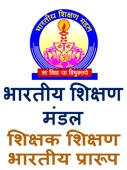#TrustBJP
किस
तरह भारतीय अर्थव्यवस्था का चेहरा बदल देगा GST?
GST(गुड्स एंड सर्विसेज
टैक्स/ वस्तु एवं सेवा कर) की अवधारणा एक क्रन्तिकारी कदम साबित होगी तथा इसमें
सरकार का आर्थिक चेहरा बदल देने की क्षमता है l
भारतीय ट्रक चालक एक दिन
में औसतन 280 किलोमीटर परिचालन करते हैं जबकि सामान्य वैश्विक औसत 400 किलोमीटर
प्रतिदिन है तथा संयुक्त राज्य अमेरिका में यह आंकड़ा 700 किलोमीटर प्रतिदिन हैl
भारतीय ट्रक चालकों के इस औसत से निम्न प्रदर्शन की वजह बुरी सड़कें कम और पुरातन नियम-कानून
अधिक हैं l
भारत में ट्रक चालक उनके
समय का कुल 60% हिस्सा जांच चौकियों (चेक पोस्ट्स) एवं टोल नाकों पर वाद-प्रतिवाद
करते हुए बिताते हैंl
भारत में सड़क परिवहन
क्षेत्र में तकरीबन 650 जांच चौकियाँ और 11 प्रकार की कर-श्रेणियाँ मौजूद हैंl
ट्रकों का धीमा परिचालन
उत्पादकता में कमी लाता हैl
यदि भारत के ट्रकों द्वारा
रोज़ तय की जाने वाली औसत दूरी में 20% वृद्धि की जाए तो उनकी उत्पादकता में 12%
वृद्धि होगी l
अधिक उत्पादकता , वृहद
भंडारण (बफर स्टॉक) की आवश्यकता घटाएगी, जल्दी ख़राब होने वाली वस्तुओं की हानि को
कम करेगी, अधिक भण्डारगृह स्थापित करने की आवश्यकता में कमी लाएगीl
विश्लेषकों का कहना है कि
वस्तु एवं सेवा कर (GST) उपरोक्त व्याख्या के अनुसार उत्पादकता को प्रोत्साहन दे
सकती हैl
GST के लाभ :
एकीकृत बाज़ार: GST, अनेक प्रकार के केन्द्रीय करों (उदाहरणार्थ:
केन्द्रीय VAT, उत्पाद शुल्क, सेवा कर, अंतर-राज्यीय बिक्री पर
केंद्रीय बिक्री कर, आदि) एवं राज्य कर (बिक्री
पर VAT, मनोरंजन कर, विलासिता कर तथा नगर
पालिकाओं द्वारा लगाए गए चुंगी और प्रवेश कर) आदि में कटौती करेगाl इस प्रकार यह
एकीकृत बाजारों के निर्माण में अग्रसर होगा जो राज्यों के मध्य वस्तुओं के
निर्बाधित आवागमन को बढ़ावा देगा तथा व्यापार की विनिमय लागत को कम करेगा
वर्तमान में कंपनियों को
अपने उत्पाद/सेवा की सम्पूर्ण आधारभूत लागत पर कई प्रकार के कर देने पड़ते हैं
किन्तु GST के अंतर्गत कर भुगतान करने वाले संस्थानों को वस्तु/सेवा श्रृंखला में उनके
अन्य पंजीकृत डीलर्स से हुए आदानों पर पूर्व में चुकाए गए करों पर क्रेडिट मिलेगाl ऐसा करने से राजस्व में अतिरिक्त वृद्धि होगी क्योंकि
असंगठित क्षेत भी कर-भरण दायरे में आ जाएगाl
जीएसटी के तहत राज्यों को
(केवल केंद्र सरकार के खिलाफ) सेवाओं पर कर की अनुमति दी जाएगी।
कर आधार का विस्तार: GST, कर चुकाने वाले संस्थानों को उनकी
वस्तु/ सेवाओं पर पूर्व में चुकाए गए सभी करों पर क्रेडिट प्रदान करेगा. इससे राजस्व में अतिरिक्त वृद्धि होगी क्योंकि
असंगठित क्षेत भी कर-भरण दायरे में आ जाएगा जो फ़िलहाल मूल्य-श्रृंखला में शामिल
नहीं है l राज्यों को सेवाओं पर कर संग्रह का अधिकार रहेगाl
सरकार के कर राजस्व में वृद्धि होगी और इससे
जीडीपी विकास दर 0.9-1.7 प्रतिशत से बढ़ सकती है।
निर्यात को प्रोत्साहन:
चूंकि उनपर कर –भार शून्य
रखा गया हैl इसके साथ ही जीएसटी द्वारा वस्तुओं एवं सेवाओं के लागत मूल्य में कमी
आने से भारतीय वस्तुओं एवं सेवाओं को अंतर्राष्ट्रीय बाज़ार में कम प्रतिस्पर्धा का
सामना करना पड़ेगाl
गत वर्ष एचोसैम द्वारा
प्रकाशित एक अध्ययन में यह निष्कर्ष निकाला गया कि एक राष्ट्रीय जीएसटी तंत्र,
भारत की अर्थव्यवस्था में वृद्धि को 1.4 से 1.7
प्रतिशत तक बढाते हुए
राजस्व में 1.2 ट्रिलियन प्रति वर्ष की वृद्धि करेगाl
The GST roll out will prove to be a revolutionary step and has potential to transform the "fiscal architecture" of the government
Indian truck drivers clock an average of 280 km per day, World average is 400 km per day and USA average is 700 km The under performance of Indian truckers has less to do with bad roads and less fancy trucks and more about prevailing archaic laws.
Truck drivers in India spend 60 per cent of their time off roads negotiating check posts and toll plazas
650-odd check posts and 11 categories of taxes on the road transport sector in India.
Slow movement of trucks leads to productivity loss.
If the distance covered goes up by 20% per day, Indian truck productivity would improve by 12%.
Higher productivity would cut the need for buffer stocks; reduce the loss of perishable goods, cut down the need for many warehouses, etc.
Analysts say the implementation of the goods and services tax (GST) could provide the kind of productivity boost illustrated above.
The benefits of GST:
Unified market: The GST will cut down the large number of taxes imposed by the central government (eg. central VAT or excise duty, services tax, central sales tax on inter-state sales, etc.) and states (VAT on sales, entertainment tax, luxury tax and octroi and entry taxes levied by municipalities). This will lead to the creation of a unified market, which would facilitate seamless movement of goods across states and reduce the transaction cost of businesses.
Lower incentive to evade tax: Currently, companies have to pay taxes on entire underlying value of the product/service, but with GST, will get credit for all taxes paid earlier in the goods/services chain incentivizing tax-paying firms to source inputs from other registered dealers. This will bring in additional revenues as the unorganized sector would also be drawn into the tax net.
Widen tax base: GST will give credits for all taxes paid earlier in the goods/services chain incentivising tax-paying firms to source inputs from other registered dealers. This will bring in additional revenues to the government as the unorganised sector, which is not part of the value chain, would be drawn into the tax net.
States will be allowed to tax services (as opposed to only the central government) under the GST.
Government's tax revenue will increase & GDP growth could go up by 0.9-1.7 per cent.
Exports will also get a boost as they are zero-rated for taxes and also because the fall in cost of manufactured goods and services under GST will increase the competitiveness of Indian goods and services in the international market
A study published last year by Assocham concluded that a national GST system could increase economic growth in India by 1.4-1.7 per cent with an annual revenue boost of Rs. 1.2 trillion.
Please share important points on social media






